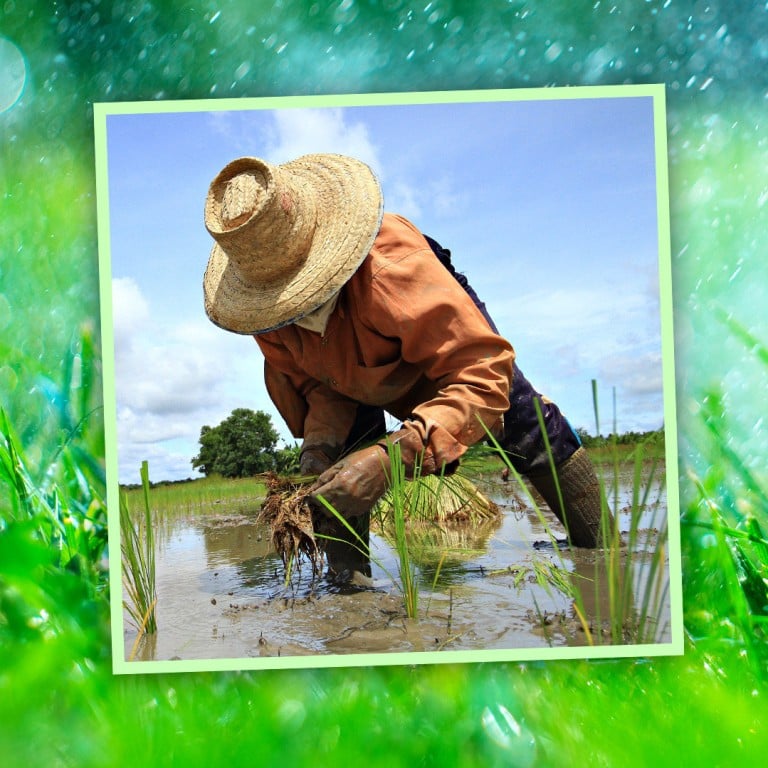
Explainer | Understanding ‘grain rain’, one of 24 solar terms in Chinese calendar, signifies start of new cycle of growth
- Ancestors observe weather, plants, animals, divide year into 24 solar terms
- It is believed drinking tea on ‘grain rain’ day can ward off evil spirits
There is an old saying in China, “Everything is born in spring, grows in summer, harvests in autumn, stores in winter.”
The changes in the four seasons bear many similarities to human habits throughout the year.
Spring is when many people often feel energised and are likely to start exercising more often, particularly outside because of the warmer weather, which makes it a more pleasant experience.
Summer often means hard work and high temperatures. Generally, the light and heat from the sun have a positive psychological and physical affect on people, which can make them more productive.
In autumn, we tend to slow down as the days get cooler and may eat more to prepare for winter, which is traditionally a season for rest and extra sleep.
As a guide to living life according to the changes in climate, plants, and animals’ habits, the ancient Chinese divided the year into 24 solar terms.
But how did they capture these natural rhythms? Here, the Post explains.

Origins
Solar terms is an idea that dates back to the Shang dynasty 3,600 years ago, deriving from the need for precise climate references to optimise agricultural production.
Ancient people living near the Yellow River – China’s second longest – used their observations of celestial movements, weather patterns and natural phenomena to divide the year into 24 solar terms.
They believed that the weather changes every 15 days.
Each season has three months, with two solar terms in each month.
Among these solar terms, there are some that reflect seasonal changes. For example, the lichun, a day observed between February 3 and 5 each year, signifies the beginning of spring.
Some reflect the changes in the weather. Grain rain, or guyu, a day between April 19 and 21, marks the start of significant rainfall that will nourish crops.
Others represent phenological changes, like awakening of insects, or jingzhe, a day between March 5 and 7, when spring thunder wakes up hibernating insects from underground.
Others reflect climate changes, such as minor heat, or xiaoshu, a day between July 6 and 8, indicating when the weather starts getting hotter.
The 24 solar terms also serve as a dietary guide for Chinese people.
Diets are adapted to the seasons to keep their bodies in balance. Traditional advice suggests: “Eat sprouts in spring, melons in summer, fruits in autumn and roots in winter,” with intermittent fasting as a complementary practice.
Traditional Chinese medicine (TCM) also follows the 24 solar terms. It recommends various soups, infusions and other preparations throughout the year, based on the sun’s position.
In 2016, the 24 solar terms were added to Unesco’s intangible cultural heritage list.
Last term of spring
Grain rain, known as guyu in Chinese, is the last term of spring, typically occurring between April 19 and 21.
Deriving from the ancient saying, “Rain brings a hundred grains”, it signifies the start of a new growth cycle.
The day indicates the end of cold weather and the rapid rise in temperature, which is beneficial for cereal crop growth.
It is also a critical time to protect crops from insect damage.
During the guyu period, sandstorms and strong winds become more frequent in China’s northern regions.
Meanwhile, the south experiences heavy rain.
Modern practices
In southern China, there is a tradition of drinking tea on Grain Rain Day.
Tea is a rich source of vitamins and amino acids, which is believed to help remove heat from the body and benefits the eyes.
It is commonly believed that drinking tea on this day can also ward off evil spirits.

In northern China, people eat Chinese toon, a beef and onion plant, during this period.
This crunchy and tender vegetable is rich in vitamins C and E, which help strengthen the immune system and benefit the stomach and skin.
Meanwhile, coastal villages in northern China celebrate grain rain by holding festivals, as it also signals the start of the fishing season.
There are sea-worshipping ceremonies in which people pray for a bountiful harvest and the safety of their families.
The Grain Rain Festival, dating back over 2,000 years, is rooted in the belief that the Dragon King, a Chinese water and weather god, shields fishermen from danger at sea and ensures a bountiful catch.

